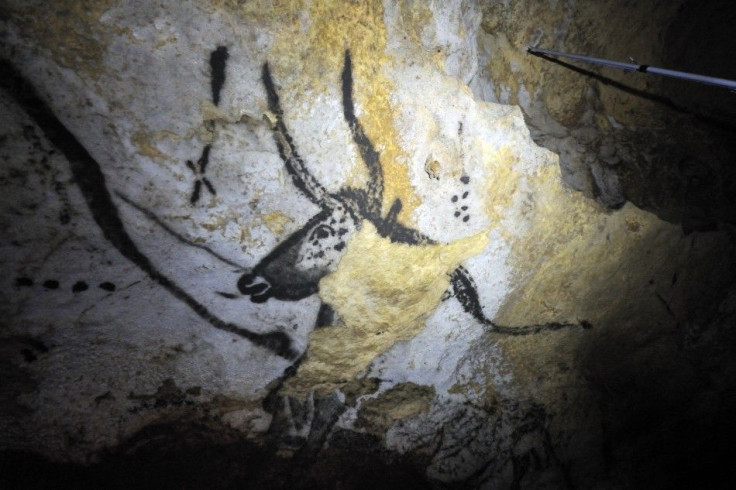Ancient Paint-Making Studio Unearthed: Were Our Ancestors Artists?
Engraved Tools Point to Earlier Changes in Human Brains Than Expected

Art for art's sake is called post-modern, but art that exists as a representation of some other thing, like death for example, is what scientists call syntactical thinking and is a form of higher brain function that separates humans from other animals. This type of thinking is what is needed to create art, and it may have allowed early humans to evolve further away from more primitive homonids, the Journal Science reported.
Now comes evidence from Blombos Cave (BBC), in South Africa, where scientists have unearthed a trove of decorated bone and rock that could show syntactical thinking developing much earlier on in human history than was previously thought.
The conceptual ability to source, combine, and store substances that enhance technology or social practices represents a benchmark in the evolution of complex human cognition, the report said.
Excavations in 2008 at Blombos Cave, South Africa, revealed a processing workshop where a liquefied ochre-rich mixture was produced and stored in two abalone shells 100,000 years ago. Ochre, bone, charcoal, grindstones, and hammerstones form a composite part of this production toolkit. The application of the mixture is unknown, but possibilities include decoration and skin protection.
The use of symbolism on engraved pieces of ochre (rocks that can be crushed to make pigment) and the presence of a complex tool kit suggests Middle Stone Age people were behaving in a cognitively modern way at least 80,000 years ago, according to researchers from the University of the Witwatersrand, Johannesburg. Initial excavations of the cave were by Christopher Henshilwood and Cedric Poggenpoel and later with a team of excavators. Under Henshilwood's direction the cave has been excavated from 1997 - 2009, and further excavations are planned for the future. When excavations at BBC began in 1992 the cave entrance was almost totally covered by sand.
The origins of modern human behavior are widely debated, and evidence for its origins is still missing. The BBC excavations confirm recent and older findings from a number of African Middle Stone Age sites that suggest some aspects of modern behavior evolved nearly 100,000 years ago. Recent finds in 70,000 year old African sites of objects with abstract engravings, large quantities of pigment and formal bone tools have been rejected by some as clear-cut evidence of modern behavior for various reasons.
The find of the BBC engraved ochres adds a clear marker of symbolically mediated behavior to the list of innovations already identified in the Middle Stone Age. Henshilwood and Poggenpoel contend their find clearly reflects the acquisition of fully modern cognitive abilities by southern African populations by perhaps 100,000 years ago.
Tell us in the comments what future human societies will be able to tell about us from our long buried art studios.
© Copyright IBTimes 2025. All rights reserved.





















